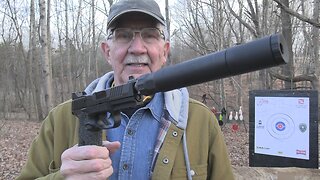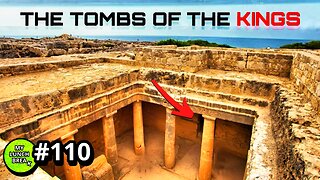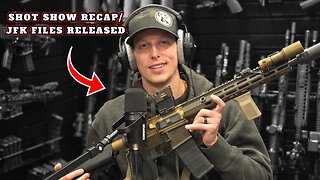Premium Only Content

Chuck Yeager Breaks the Sound Barrier -- X-1 -- 1947
Until Chuck Yeager broke the sound barrier on October 14, 1947, it was a commonly-held belief that exceeding the speed of sound — breaking the sound barrier — would destroy an aircraft.
Where did these ideas originate? Here’s a quick primer on the sound barrier.
What exactly is the sound barrier?
Today, we know that the sound barrier is the sudden increase in aerodynamic drag that happens when an object approaches the speed of sound — also known as Mach 1. It’s not a physical or solid barrier.
At what speed do you break the sound barrier?
The speed at which you break the sound barrier depends on many conditions, including weather and altitude. It’s approximately 770 mph or 1,239 kmh at sea level.
Why did people believe the sound barrier was a physical wall?
During World War II, pilots reported aircraft tearing apart and instruments freezing when they dove during combat — possibly at the moment they approached the speed of sound. It was described as hitting an invisible wall.
In the 1940s, the proper design techniques and aerodynamic details for a successful supersonic aircraft were unknown. Aircraft that are not specifically designed to fly supersonically — those having little or no wing sweep and that have thick wings with blunt leading edges — exhibit a sharp rise in aircraft drag as they approach the speed of sound. This increase comes from shockwaves forming in the accelerated flow over a wing, even though the aircraft itself is not yet exceeding the speed of sound. These shock waves cause pressure fields on the wing (and the rest of the aircraft) and can lead to significant flow separation behind the shock waves. Both of these phenomena can create significant aircraft drag. This shock formation and increase in drag is very sudden and large, and tends to be a “barrier” to any further acceleration of the aircraft. At the time, no aircraft had successfully overcome this drag rise, so some predicted that it might not be possible.
Brigadier General Charles Elwood Yeager February 13, 1923 – December 7, 2020) was a United States Air Force officer, flying ace, and record-setting test pilot who in October 1947 became the first pilot in history confirmed to have exceeded the speed of sound in level flight.
Yeager broke the sound barrier on October 14, 1947, in level flight while piloting the X-1 Glamorous Glennis at Mach 1.05 at an altitude of 45,000 ft (13,700 m) over the Rogers Dry Lake of the Mojave Desert in California. The success of the mission was not announced to the public for nearly eight months, until June 10, 1948. Yeager was awarded the Mackay Trophy and the Collier Trophy in 1948 for his mach-transcending flight, and the Harmon International Trophy in 1954. The X-1 he flew that day was later put on permanent display at the Smithsonian Institution's National Air and Space Museum. During 1952, he attended the Air Command and Staff College.
-
![[Day 26] CS Blast bounty baby](https://1a-1791.com/video/fwe2/8a/s8/1/Z/H/j/_/ZHj_w.0kob-small-Day-26-CS-Blast-bounty-baby.jpg) 2:09:11
2:09:11
ggezlol_tv
4 hours ago[Day 26] CS Blast bounty baby
32.1K1 -
 2:32:17
2:32:17
Sgtfinesse
3 hours ago💥Sunday Morning Hunt for Featherweight Artifact | New World PVP Server: Sclavia
39.4K2 -
 11:25
11:25
Film Threat
20 hours agoLET'S DISCUSS THE 2025 OSCAR NOMINATIONS | Film Threat News
21.8K9 -
 13:07
13:07
DEADBUGsays
4 hours agoThe Southport Massacre, The Great British Cover-Up
29.4K14 -
 25:26
25:26
hickok45
7 hours agoSunday Shoot-a-Round # 265
19.3K26 -
 30:55
30:55
Tundra Tactical
18 hours ago $17.32 earnedFaith, Family, Gun Rights : Tundra Tactical Interviews Erich Pratt Vice President Of GOA
99.6K30 -
 24:08
24:08
MYLUNCHBREAK CHANNEL PAGE
1 day agoUnder The Necropolis - Pt 4
236K78 -
 1:26:44
1:26:44
Tactical Advisor
1 day agoTrump Starting Strong/Shot Show Recap | Vault Room Live Stream 015
127K10 -
 49:13
49:13
SGT Report
1 day agoGILDED CAGE: A.I. PRODUCED MRNA VACCINES & THE ROAD TO HELL -- Sam Anthony
82.9K409 -
 17:00
17:00
BIG NEM
17 hours agoI Spent 10 Years Making a Movie About a 40 Year Old VIRGIN
12.4K1